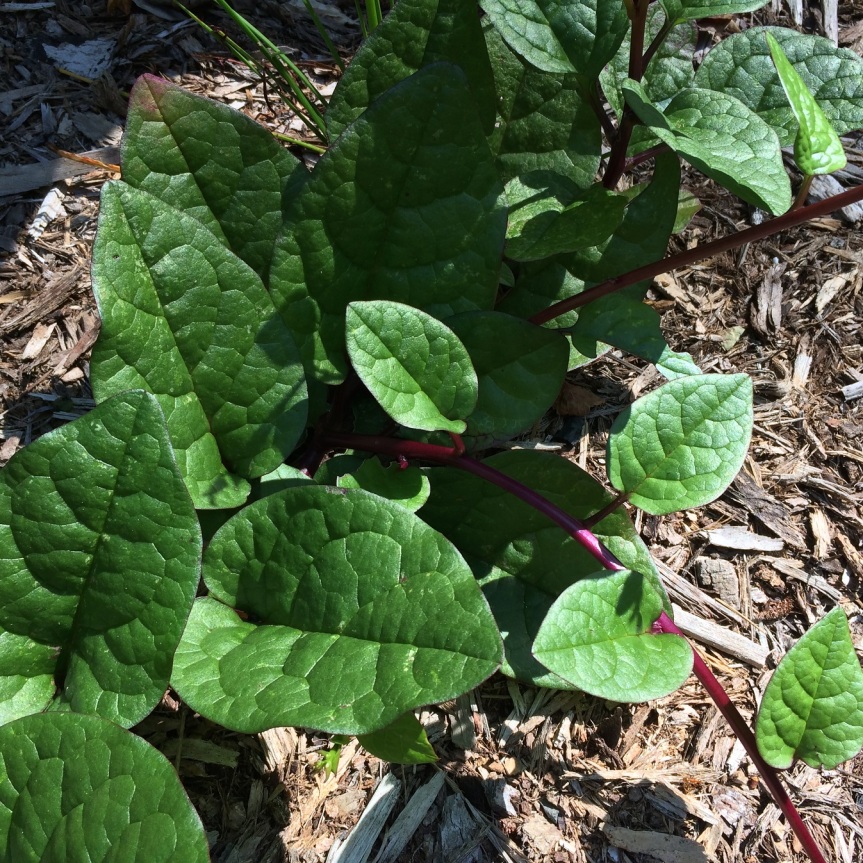It is a fairly typical day for September in North Carolina: Bright sun, 85 F (29.5 C), no significant rain last week, and no rain forecast for the next week. The intensity of the sun made it difficult to get decent photos and doesn’t encourage hard work in the garden or in the greenhouse.
Nevertheless, here are six pictures from the garden today. See the Propagator’s blog for his six and for links to other blogs who are participating in Six on Saturday.
1. Sternbergia lutea (autumn daffodil)

I could have sworn that this little amaryllid was from South America, but when I looked it up just now, I learned that it is actually Eurasian, with a range extending from the western Mediterranean to Tajikistan. Usually I get a nice little clump, but this year the bulbs have been sprouting and flowering one or two at a time. Perhaps in this dry weather they haven’t had the usual environmental signals that induce mass blooming.
2. Lycoris radiata (hurricane lily, red spider lily)

Now that they have finished flowering, the L. radiata bulbs are starting to sprout leaves.
3. Hibiscus coccineus (red swamp mallow)

It looks as though something drilled right through this flower when the petals were still folded together in a bud. Native to the southeastern U.S., H. coccineus does very well in piedmont gardens and flowers for much of the summer. In winter, the dried stems and seed capsules add interest to an otherwise barren flowerbed. Despite its name, it grows well in regular garden soil, and its fat taproot helps it survive drought.
The palmate leaves of this species somewhat resemble a particular herb that is still illicit in North Carolina. In the spring, before my plants start producing their dinner plate-sized flowers, I often think of this news story from 2004.
4. Conoclinium coelestinum (blue mistflower)

The color balance of this photo seems to be off , but I’m not sure if it is my phone camera or monitor that’s to blame. If you see a magenta flower, imagine that it is more a bluish lavender. This species is native to the eastern U.S., from the Great Lakes to southern Texas, and although the flowers are beautiful at this time of year, I rather regret introducing it into the garden. It spreads very aggressively, and the fluffy seeds drift all over the place.
5. Basella alba ‘Rubra’ (red malabar spinach)


Every spring, I start a pot of malabar spinach from seed collected the previous autumn. The leaves really are quite tasty in soups or stews, but since we don’t cook a lot of stews in the summer, it primarily serves as an ornamental. The seeds also survive the winter in the soil, and I’m starting to see more plants sprouting in flower beds where birds have dropped seeds or I have inadvertently raked them along with fallen leaves. They look interesting and don’t seem to do any harm, so I just leave them alone.
6. Cattleya labiata var rubra ‘Schuler’

In the greenhouse, the most famous of the unifoliate cattleyas is blooming. C. labiata was the first of the large flowered cattleyas to be discovered, and it was one of the species responsible for the Victorian orchid craze. It was first imported into the U.K. in 1818 and caused a sensation, but its origin wasn’t correctly reported. Plant collectors scoured South America, discovering many other spectacular orchids in the process, but the Brazilian habitat of L. labiata wasn’t rediscovered until 1889.
Unfortunately, my greenhouse tends to be too bright and dry at this time of year, and the flowers don’t last long. You can see that the dorsal and lateral sepals of some of these flowers have dried out prematurely. I tend to do better with the unifoliate cattleyas that bloom in late winter.

Autumn daffodil! That’s a new one for me. All of your selections are lovely and unusual.
LikeLiked by 1 person
So interesting. You always have me googling things. Turns out I can get bassella rubra seeds here, so I might grow that over the vegetable arches next year.
LikeLiked by 1 person